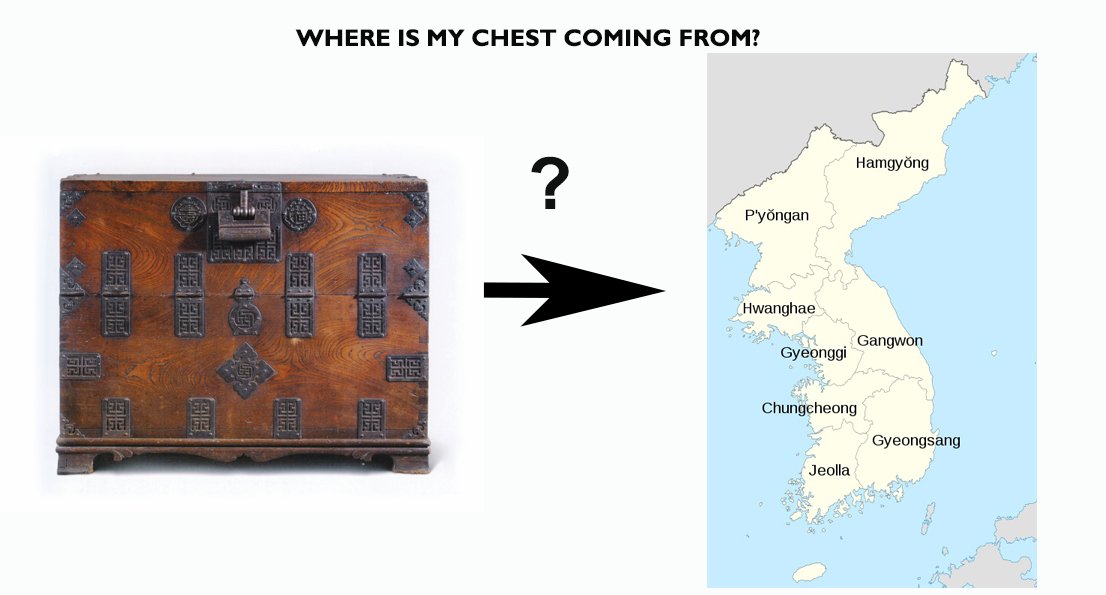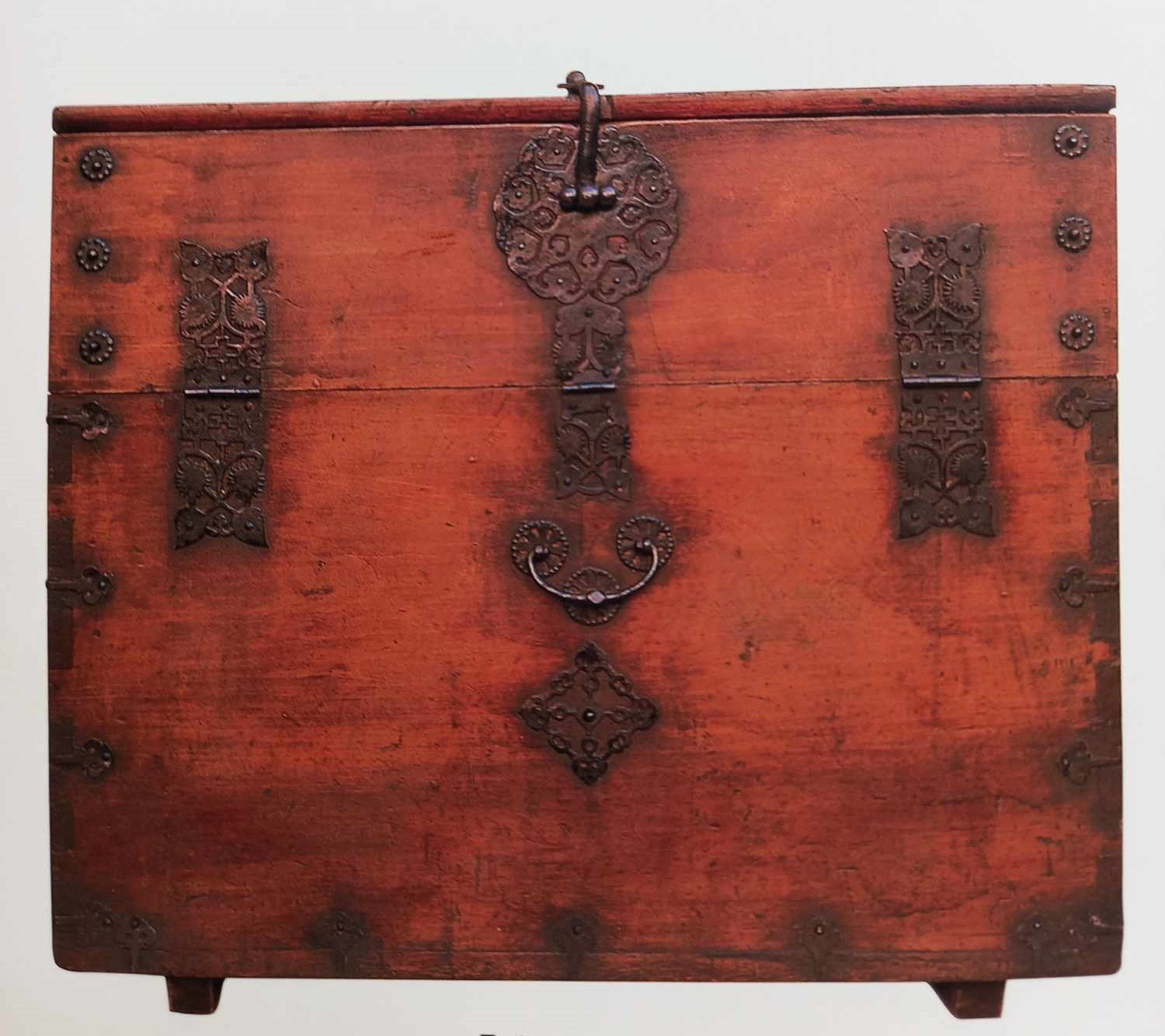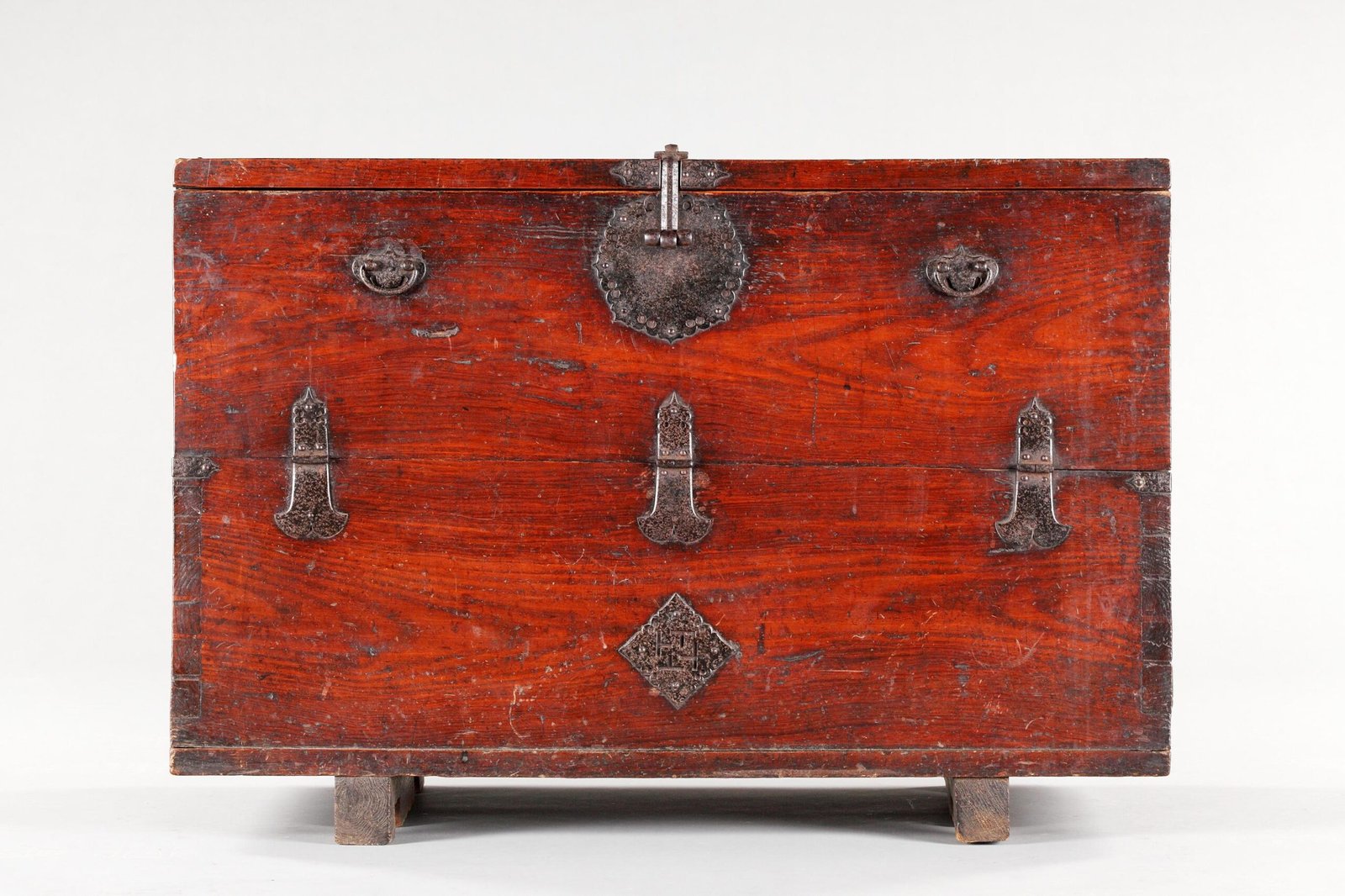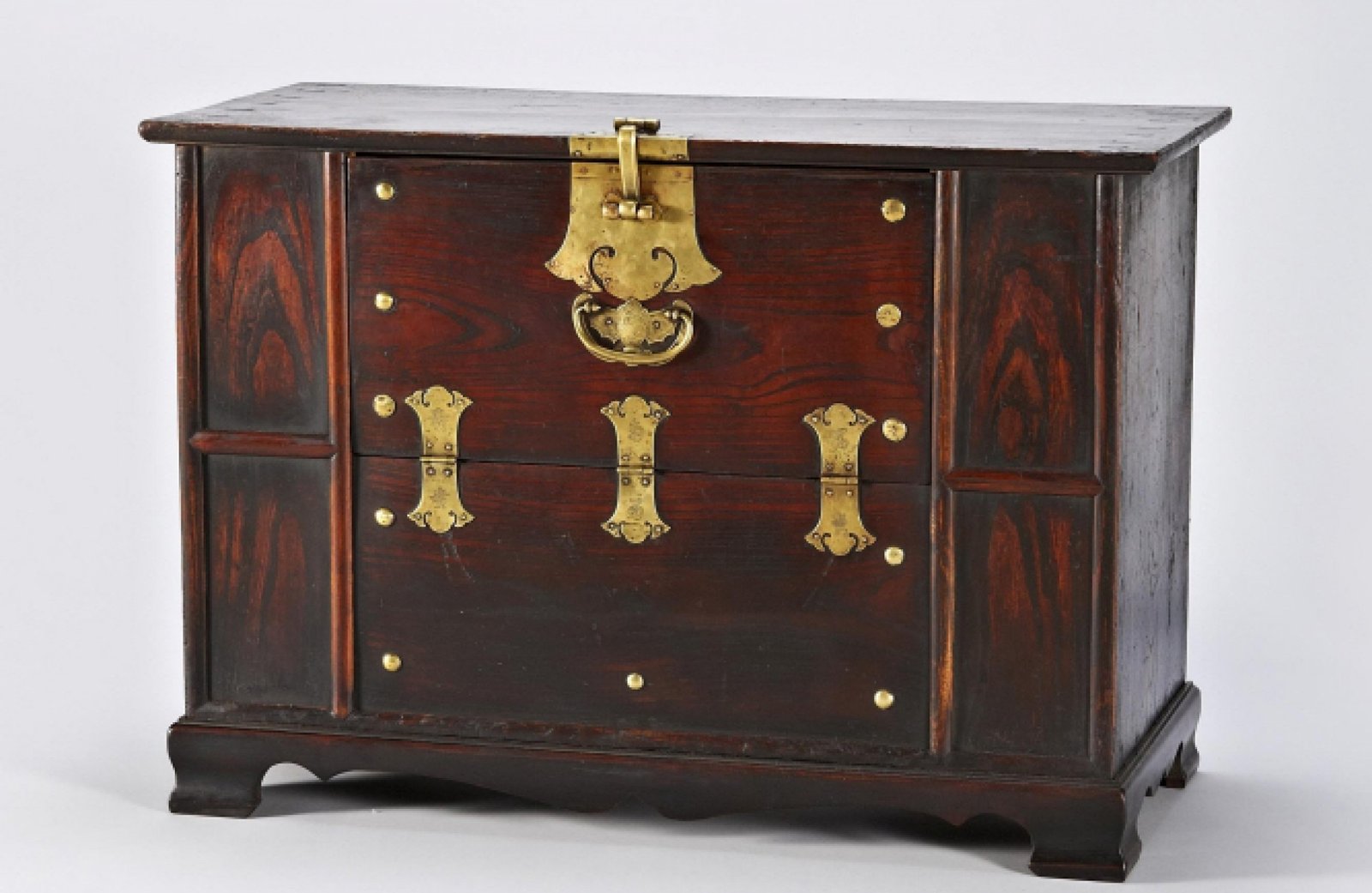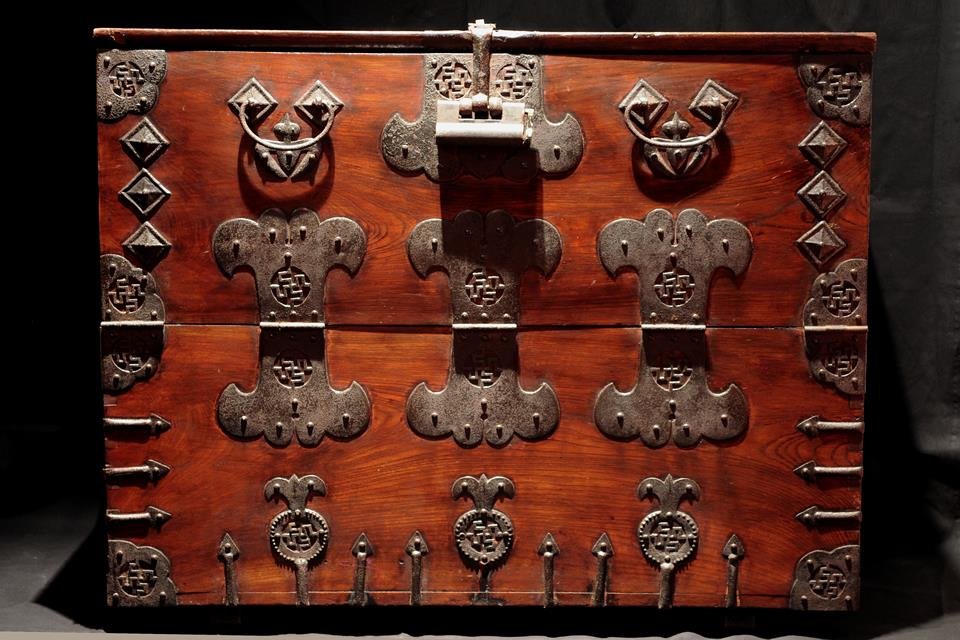ANALYSIS OF HINGES. QUESTION? The bandaji is large and mostly covered with white brass hinges? ANSWER: Pyongyang area southern part of Pyongan Do province. LINK: PYONGYANG BANDAJI-평양 반닫이 Originally from Pyongyang area in the northern part of the peninsula, where forest species were more limited due to climatic conditions and, given the poor grain (often […]
